Last Updated on February 22, 2021
Guadalajara was never on my travel wish list for Mexico, I admit it. The blank spots I’ve been wanting to fill on my Mexico map are places like San Miguel Allende, Guanajuato, Copper Canyon and the beaches on Mexico’s Pacific Coast – Puerto Vallarta, Sayulita, and San Pancho, all of which I’ve been wanting to visit since reading about them on a bunch of travel blogs a few years ago, when several bloggers based themselves there for their winter escape.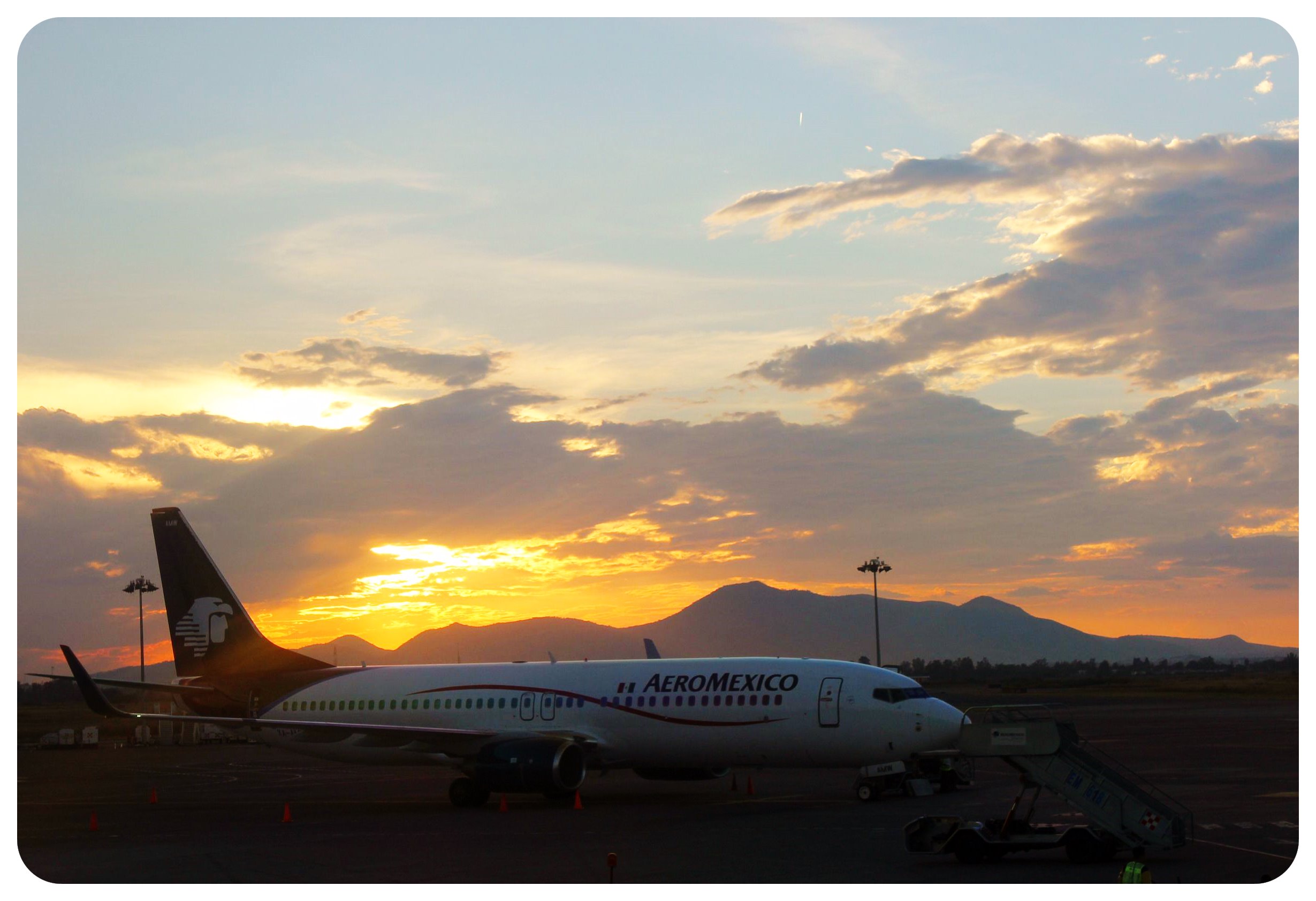 And that’s exactly how I ended up in Guadalajara: Its proximity to said beaches. I was looking for a place to fly to that had easy access to the coast, and which seemed worth exploring. Guadalajara sounded interesting enough: the cultural capital of Latin America in 2005, a university town, a city with art museums and a historic city center, and a city with several Jose Clemente Orozco murals, one of the famous Mexican muralists whose art I adore. What more could I ask for? A great flight deal ($109 from LA, booked only three days in advance) sealed the deal.
And that’s exactly how I ended up in Guadalajara: Its proximity to said beaches. I was looking for a place to fly to that had easy access to the coast, and which seemed worth exploring. Guadalajara sounded interesting enough: the cultural capital of Latin America in 2005, a university town, a city with art museums and a historic city center, and a city with several Jose Clemente Orozco murals, one of the famous Mexican muralists whose art I adore. What more could I ask for? A great flight deal ($109 from LA, booked only three days in advance) sealed the deal. My instinct had once again brought me to the right place. From my very first stroll through the historic center, I was much reminded of Mexico City – and you all know how much I love Mexico’s capital.
My instinct had once again brought me to the right place. From my very first stroll through the historic center, I was much reminded of Mexico City – and you all know how much I love Mexico’s capital. Most streets of the historic center with its beautiful well-preserved, colorful Spanish-colonial buildings were lined with trees, there was more street art than I expected – and it was among the best I’ve seen in all of Mexico, and the museums were indeed as world-class as the travel guides promised.
Most streets of the historic center with its beautiful well-preserved, colorful Spanish-colonial buildings were lined with trees, there was more street art than I expected – and it was among the best I’ve seen in all of Mexico, and the museums were indeed as world-class as the travel guides promised.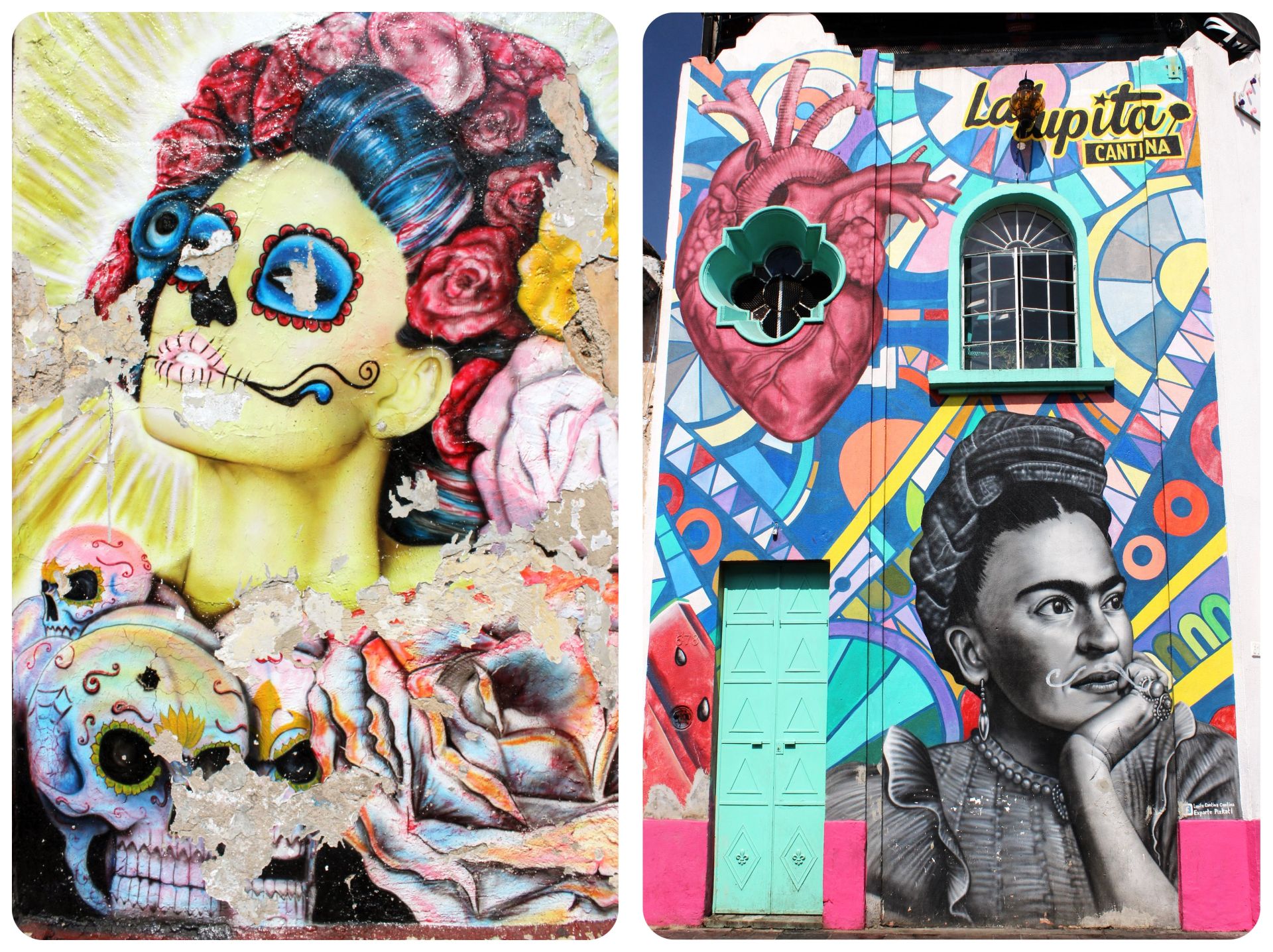 I had only two nights booked in Guadalajara, but I quickly decided to make a week out of it. Three days in a city of over four million people were just not enough.
I had only two nights booked in Guadalajara, but I quickly decided to make a week out of it. Three days in a city of over four million people were just not enough.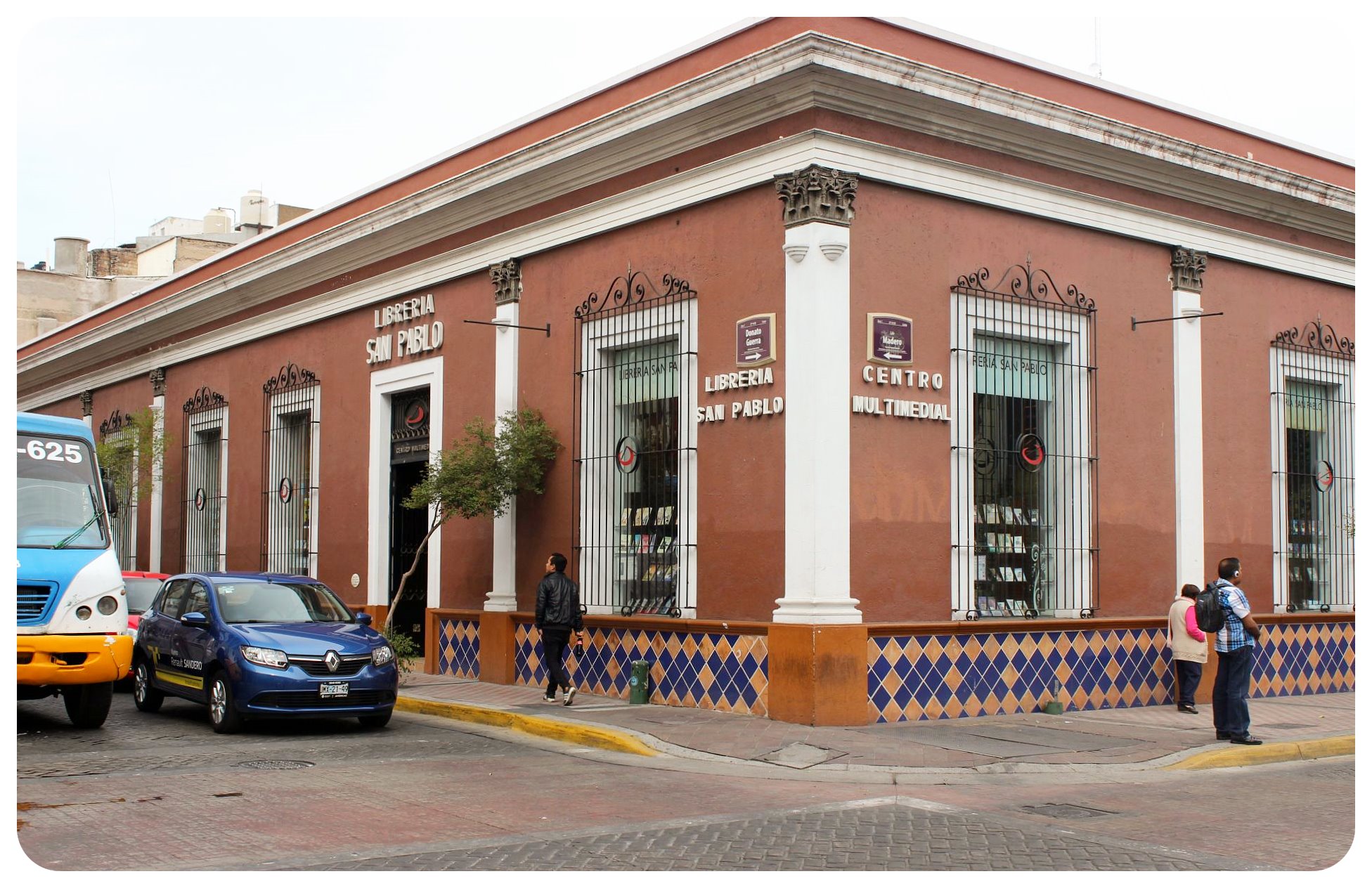 Guadalajara is actually made up of three cities: Guadalajara, Zapopan and Tlaquepaque. The historic center with its imposing cathedral in the center was where I spent most of my time, and the four plazas that surround the cathedral, laid out in the form of a cross, make Guadalajara’s center one of the prettiest in the entire country. After dark is when the plazas really come to life, with food stalls setting up, entire families gathering and having a snack, and young couples making out on the benches everywhere.
Guadalajara is actually made up of three cities: Guadalajara, Zapopan and Tlaquepaque. The historic center with its imposing cathedral in the center was where I spent most of my time, and the four plazas that surround the cathedral, laid out in the form of a cross, make Guadalajara’s center one of the prettiest in the entire country. After dark is when the plazas really come to life, with food stalls setting up, entire families gathering and having a snack, and young couples making out on the benches everywhere.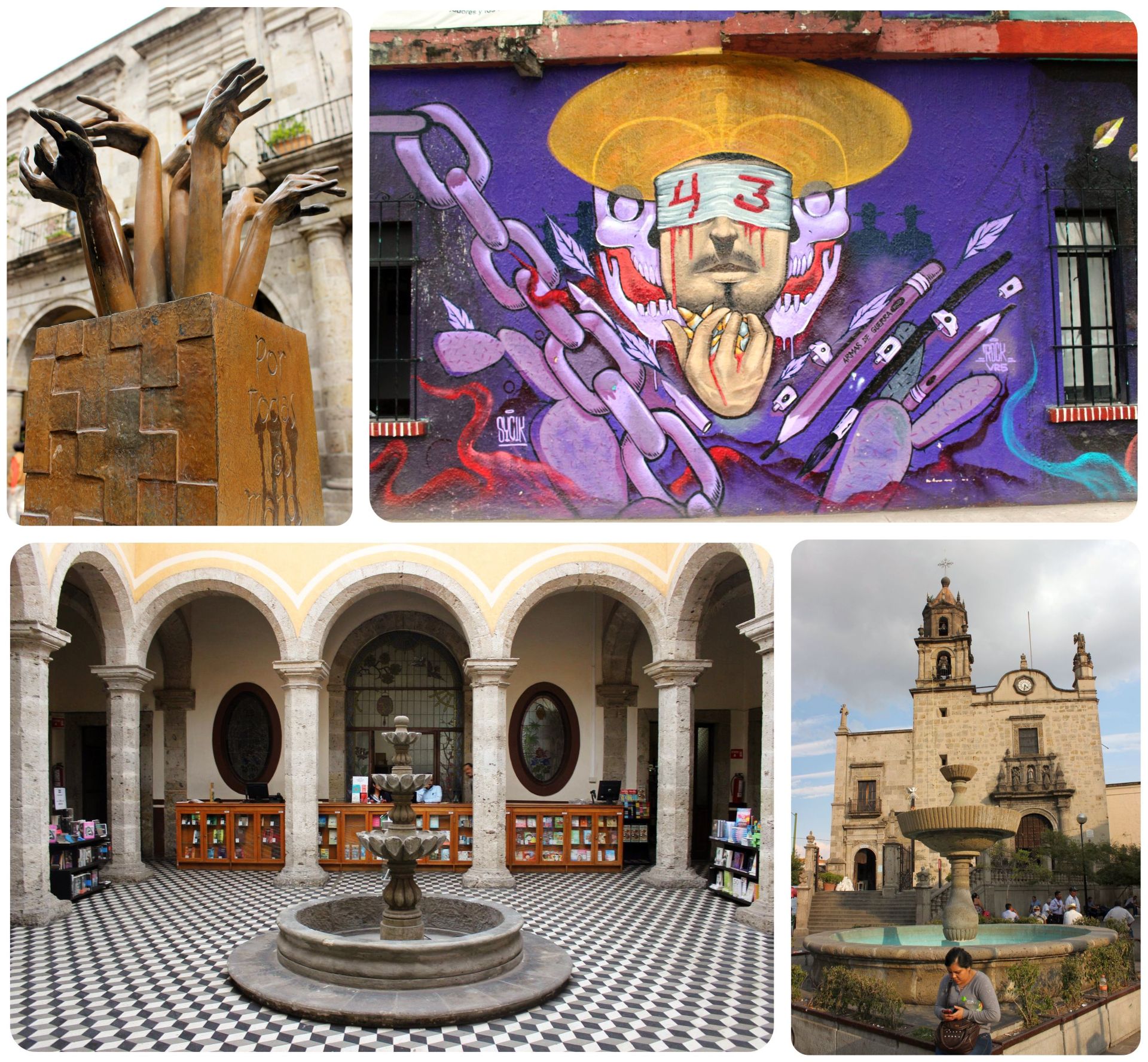 The cathedral itself is well worth a visit, a massive structure which took 50 years to complete (construction started in the 1560s) and whose architecture is an interesting mix of Gothic, Neoclassical and Palladian styles. The gothic twin spires in particular give the cathedral a unique look – the third set of towers built after the two previous ones fell during earthquakes.
The cathedral itself is well worth a visit, a massive structure which took 50 years to complete (construction started in the 1560s) and whose architecture is an interesting mix of Gothic, Neoclassical and Palladian styles. The gothic twin spires in particular give the cathedral a unique look – the third set of towers built after the two previous ones fell during earthquakes. Even though the historic center and the surrounding neighborhoods are walkable, I was happy when I discovered the city had a shared bike system, Mi Bici. I downloaded the app to see where the stations were, paid 80 Pesos (US$3.92) for a 24-hour rental with free rentals for up to 30 minutes, which is common for most bicycle shares I’ve used, and off I went. (I later discovered that a 3-day rental for MXN$160/US$7.84 would have been a better deal, but I think it’s still very cheap).
Even though the historic center and the surrounding neighborhoods are walkable, I was happy when I discovered the city had a shared bike system, Mi Bici. I downloaded the app to see where the stations were, paid 80 Pesos (US$3.92) for a 24-hour rental with free rentals for up to 30 minutes, which is common for most bicycle shares I’ve used, and off I went. (I later discovered that a 3-day rental for MXN$160/US$7.84 would have been a better deal, but I think it’s still very cheap).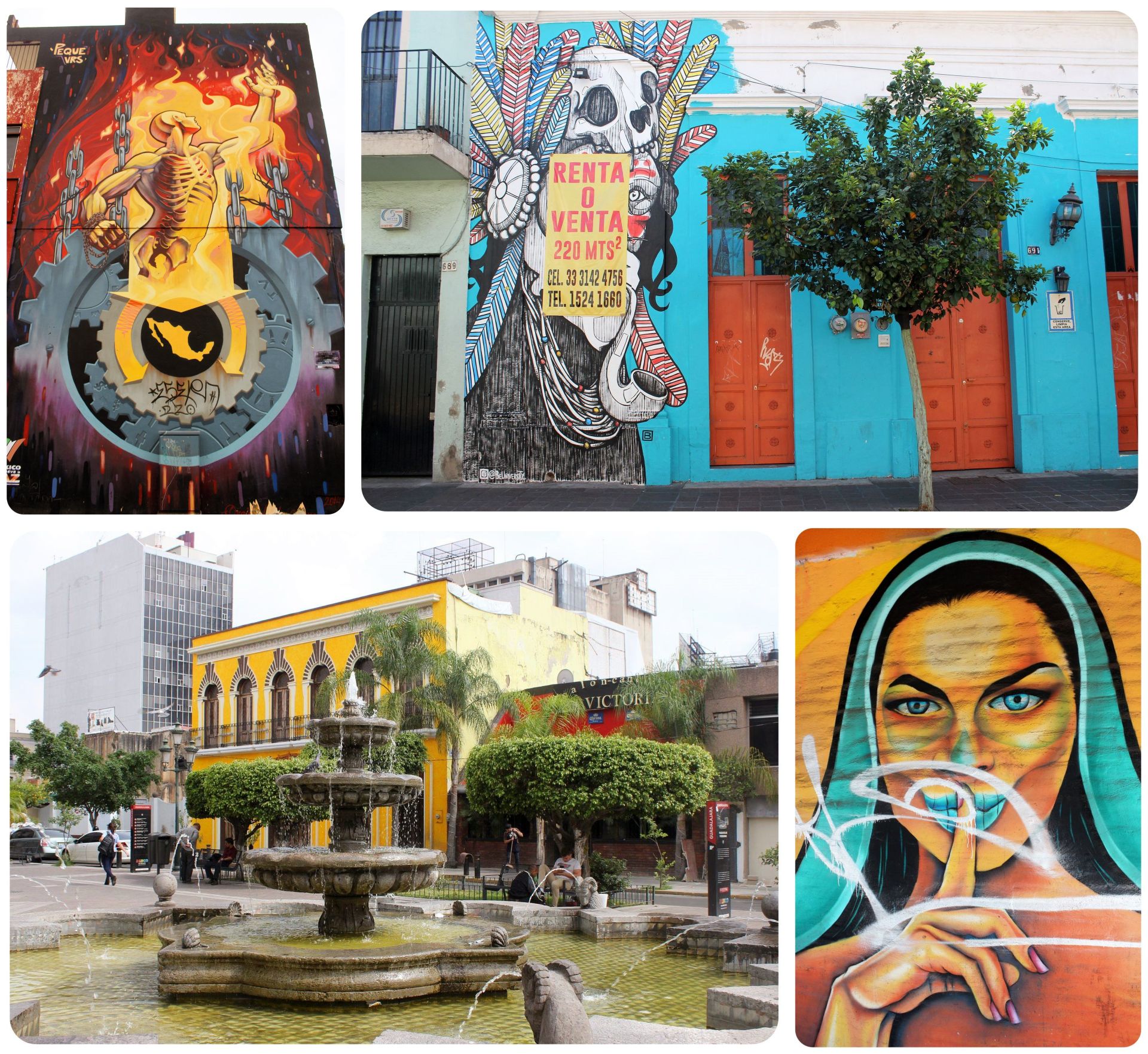 I biked around the center, took the bike over to the Plazuela De Los Mariachis, a little square that is dedicated to one of the city’s most famous inventions – Mariachi music originates in Guadalajara. Similar to Mexico City’s Plaza Garibaldi, several mariachi bands were hanging around here, possibly waiting to play for potential customers who are looking for a mariachi band for a wedding or another event, but also to serenade customers who were eating in the restaurants around the plaza (for a tip, of course).
I biked around the center, took the bike over to the Plazuela De Los Mariachis, a little square that is dedicated to one of the city’s most famous inventions – Mariachi music originates in Guadalajara. Similar to Mexico City’s Plaza Garibaldi, several mariachi bands were hanging around here, possibly waiting to play for potential customers who are looking for a mariachi band for a wedding or another event, but also to serenade customers who were eating in the restaurants around the plaza (for a tip, of course). I also biked over to Avenida Chapultepec, a wide boulevard lined with restaurants and bars, an area that didn’t seem like much during the day but which came to life at night when Guadalajara’s students and twenty-somethings filled the trendy bars in and around Avenida Chapultepec, as I’d learn a few days later when a group from our hostel made our way over there on a Friday night for some drinks. Of course I found here, like everywhere in Mexico these days, some excellent local craft beers on the menu.
I also biked over to Avenida Chapultepec, a wide boulevard lined with restaurants and bars, an area that didn’t seem like much during the day but which came to life at night when Guadalajara’s students and twenty-somethings filled the trendy bars in and around Avenida Chapultepec, as I’d learn a few days later when a group from our hostel made our way over there on a Friday night for some drinks. Of course I found here, like everywhere in Mexico these days, some excellent local craft beers on the menu.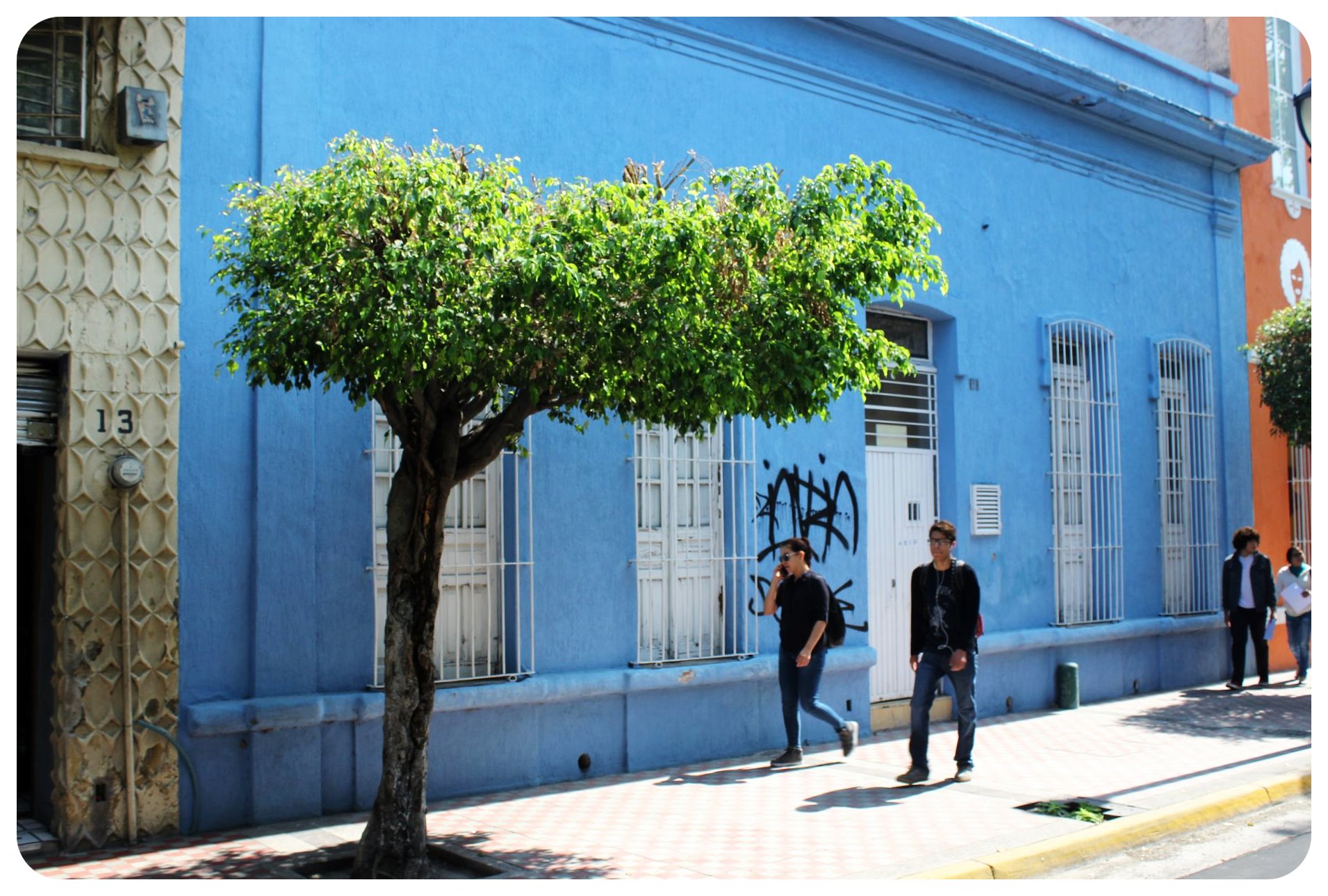 The bike came in especially handy when I wanted to visit the Museo de Arte Zapopan, a modern art museum which is located in the Zapopan part of town. It was a welcome excuse for me to check out that part of town, which I might not have gone to otherwise, because it was pretty far from the historic center, where I was staying.
The bike came in especially handy when I wanted to visit the Museo de Arte Zapopan, a modern art museum which is located in the Zapopan part of town. It was a welcome excuse for me to check out that part of town, which I might not have gone to otherwise, because it was pretty far from the historic center, where I was staying.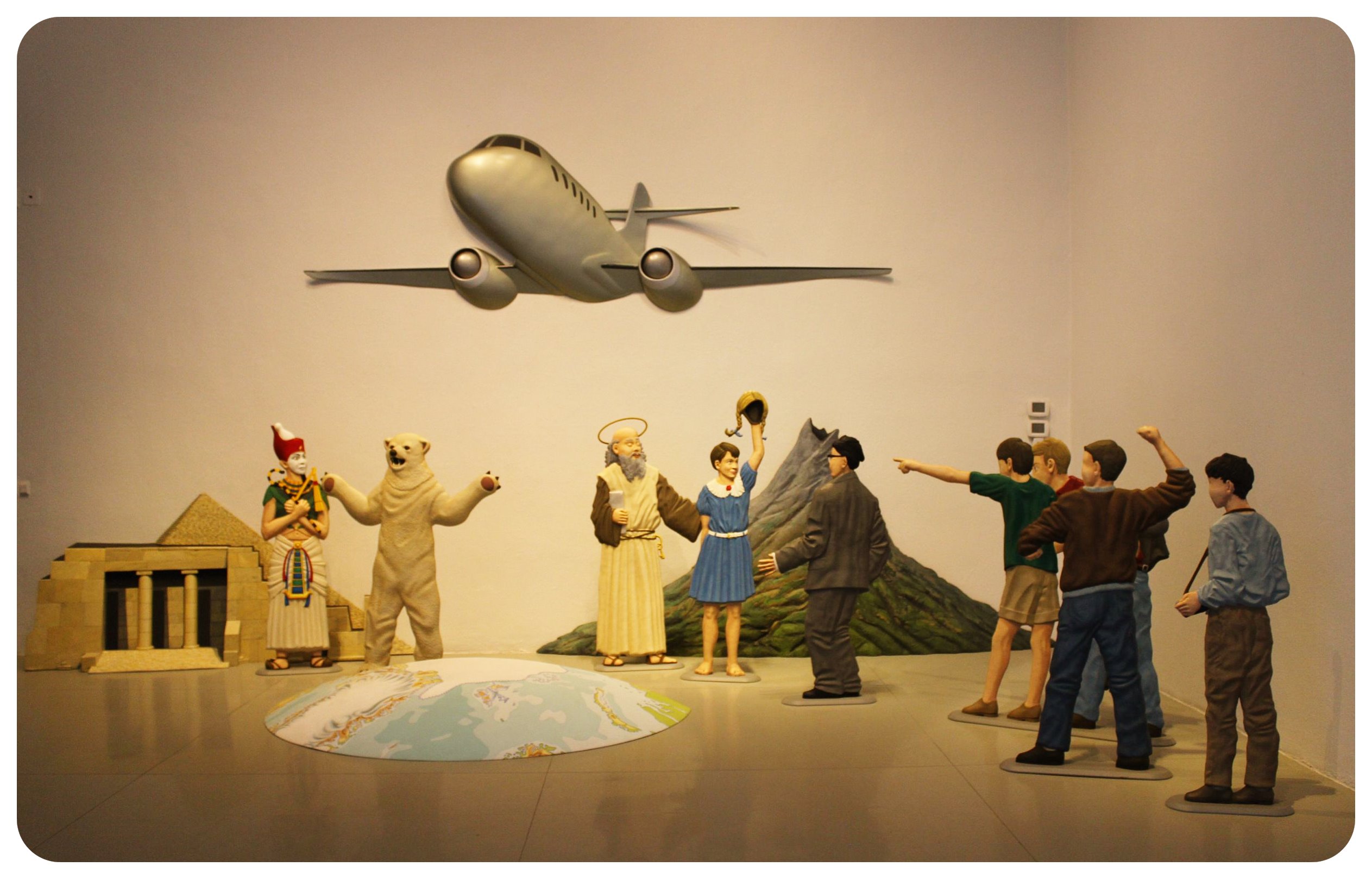 The museum turned out to be one of those contemporary art museums that made me think several times ‘Really? This is art?’, and it was much smaller than I expected, but the architecture in Zapopan and the striking Basilica Nuestra Señora de Zapopan, which dates back to 1730, made up for the slightly disappointing museum (which luckily had free admission. I would’ve regretted paying for it, I think).
The museum turned out to be one of those contemporary art museums that made me think several times ‘Really? This is art?’, and it was much smaller than I expected, but the architecture in Zapopan and the striking Basilica Nuestra Señora de Zapopan, which dates back to 1730, made up for the slightly disappointing museum (which luckily had free admission. I would’ve regretted paying for it, I think).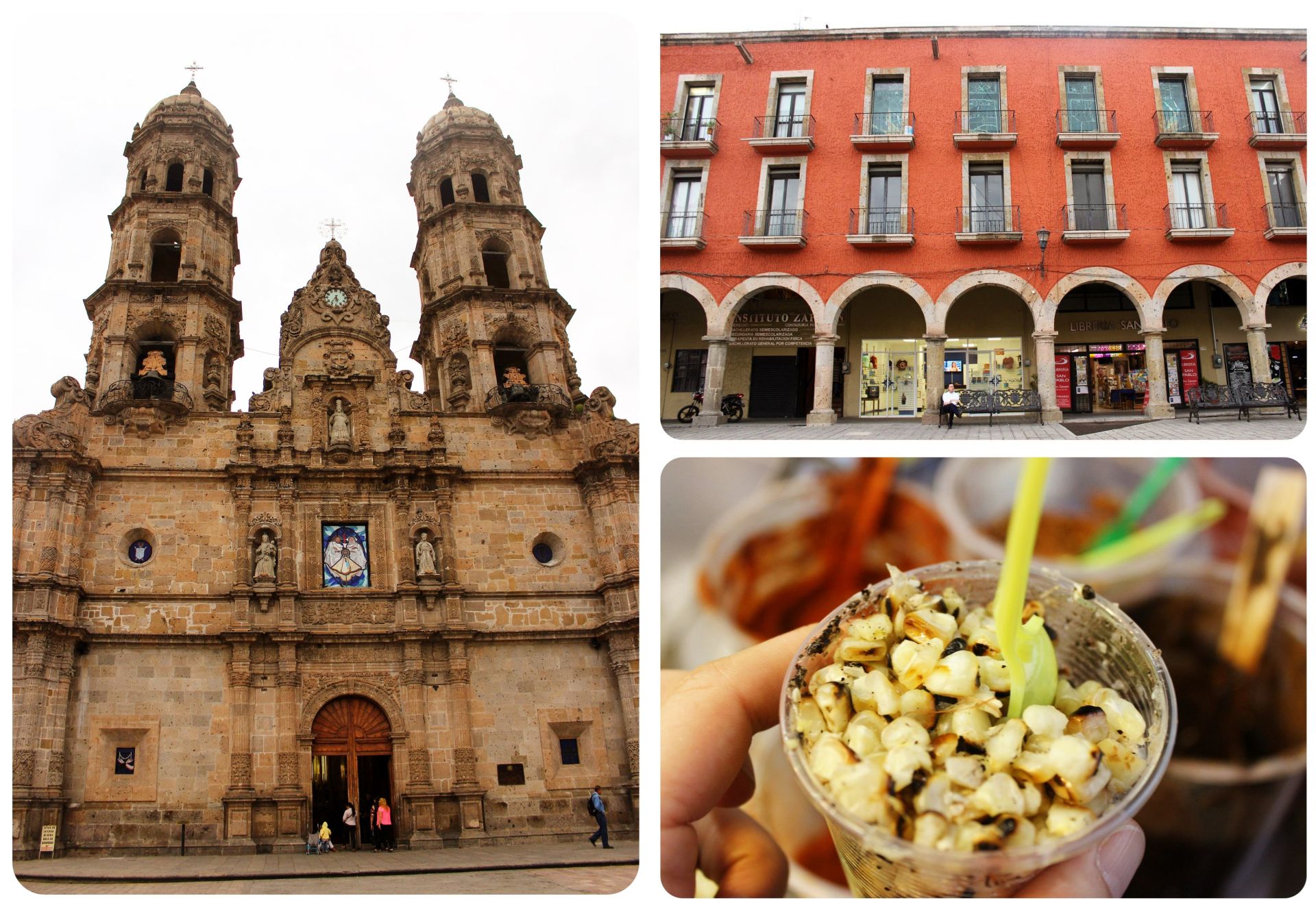 I much preferred the Museo de las Artes de la Universidad (MUSA) in the center of Guadalajara, which didn’t only win me over with some impressive pieces of art, but also with its auditorium, in which Orozco had painted both the walls behind the stage as well as the inside of the auditorium’s dome. Both murals depict, typical for Orozco, social injustice and resistance against the system.
I much preferred the Museo de las Artes de la Universidad (MUSA) in the center of Guadalajara, which didn’t only win me over with some impressive pieces of art, but also with its auditorium, in which Orozco had painted both the walls behind the stage as well as the inside of the auditorium’s dome. Both murals depict, typical for Orozco, social injustice and resistance against the system.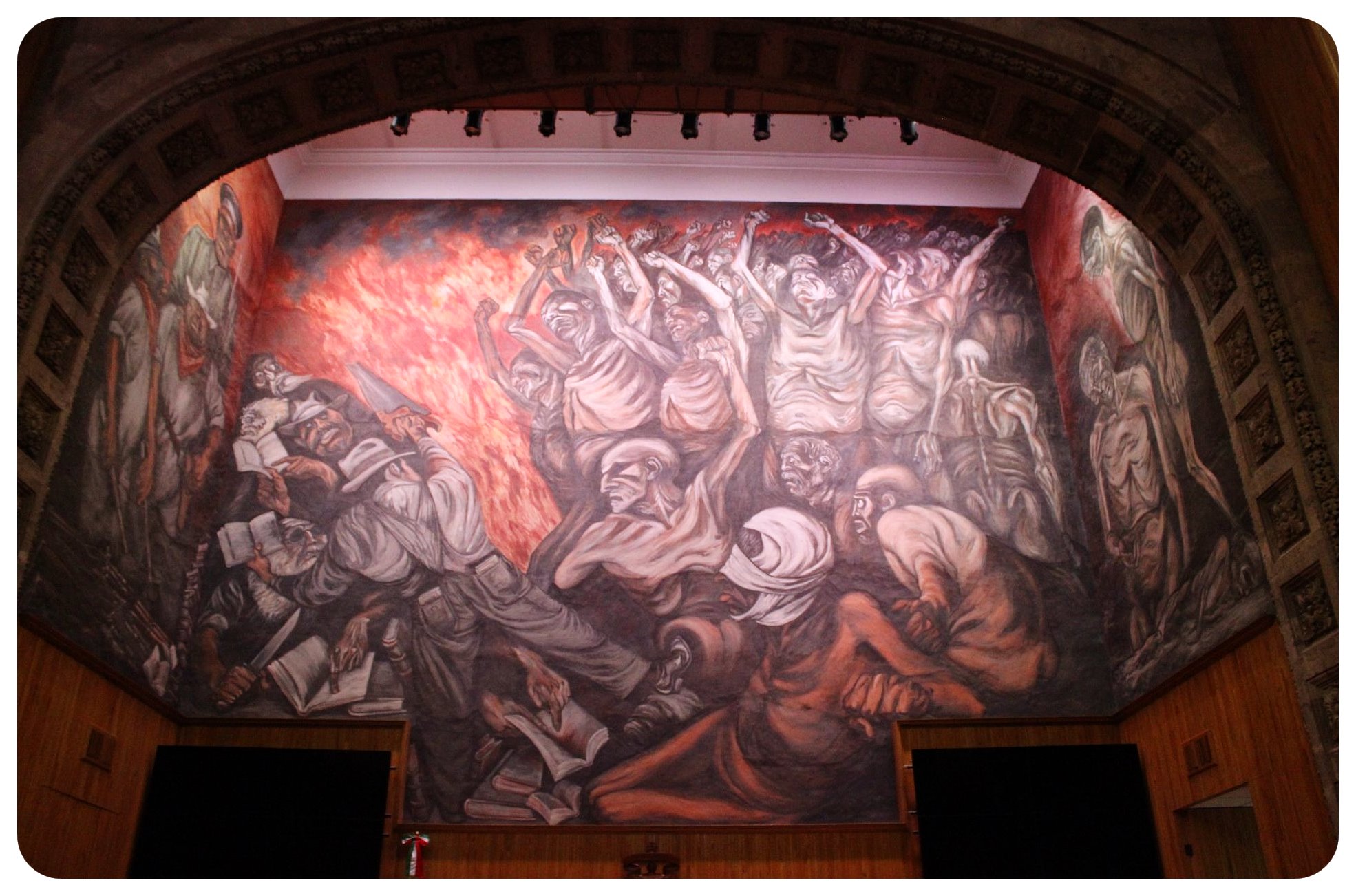 Another art space in Guadalajara that shouldn’t be missed is the Hospicio Cabañas, one of the oldest and largest hospital complexes in the Americas, and declared a UNESCO World Heritage Site in 1997. Orozco painted the domed chapel of the 19th-century neoclassical hospice complex – 57 frescoes cover the walls and the ceilings. It is one of his masterpieces.
Another art space in Guadalajara that shouldn’t be missed is the Hospicio Cabañas, one of the oldest and largest hospital complexes in the Americas, and declared a UNESCO World Heritage Site in 1997. Orozco painted the domed chapel of the 19th-century neoclassical hospice complex – 57 frescoes cover the walls and the ceilings. It is one of his masterpieces. But art in Guadalajara doesn’t stop there: In recent years, Guadalajara has become more and more of a hub for young artists from all parts of Mexico and beyond. Art galleries have been popping up around town, and a residency and alternative cultural education organization supported by the State of Jalisco’s Ministry of Culture and the Instituto Cultural Cabañas, PAOS (Programa Anual de Open Studios), has been attracting artists from all over the world. The program offers a month-long residency at the Museo Taller Jose Clemente Orozco, the former residence and workshop of the late Mexican muralist.
But art in Guadalajara doesn’t stop there: In recent years, Guadalajara has become more and more of a hub for young artists from all parts of Mexico and beyond. Art galleries have been popping up around town, and a residency and alternative cultural education organization supported by the State of Jalisco’s Ministry of Culture and the Instituto Cultural Cabañas, PAOS (Programa Anual de Open Studios), has been attracting artists from all over the world. The program offers a month-long residency at the Museo Taller Jose Clemente Orozco, the former residence and workshop of the late Mexican muralist. And then there’s the street art which fills entire building walls and doors. Even on the colonial houses the art never appears disruptive, but rather adds to the crumbling facades. I stumbled upon a new great piece every day on my wanderings around town, one of the best murals was right outside the MUSA Art Museum:
And then there’s the street art which fills entire building walls and doors. Even on the colonial houses the art never appears disruptive, but rather adds to the crumbling facades. I stumbled upon a new great piece every day on my wanderings around town, one of the best murals was right outside the MUSA Art Museum: While I didn’t fall in love with any of the foods I tried in Guadalajara (and admittedly, sometimes struggling to find a vegetarian option on the meat-focused menus), I thought the tortas ahogadas, which translate to ‘drowned sandwiches’ – and they are in fact drowned, in sauce – were quite delicious, albeit messy to eat. They are usually stuffed with meat but I found several places that offered vegetarian versions . Guadalajara’s most famous dish is Birria, a stew that is made of goat meat, roast chiles and spices – if you’re a foodie and would like to try it, check out one of the birrierias in town.
While I didn’t fall in love with any of the foods I tried in Guadalajara (and admittedly, sometimes struggling to find a vegetarian option on the meat-focused menus), I thought the tortas ahogadas, which translate to ‘drowned sandwiches’ – and they are in fact drowned, in sauce – were quite delicious, albeit messy to eat. They are usually stuffed with meat but I found several places that offered vegetarian versions . Guadalajara’s most famous dish is Birria, a stew that is made of goat meat, roast chiles and spices – if you’re a foodie and would like to try it, check out one of the birrierias in town. Guadalajara doesn’t have a typical drink, but it is so close to the town from which Mexico’s most famous drink originates that almost everybody visiting Guadalajara takes at least a day trip there: Tequila. Of course you can also get it in every single bar in Guadalajara, but after seeing photos of vast fields filled with blue agave plants in a travel article a while back, I wanted to see the little town for myself, and most importantly: take a distillery tour.
Guadalajara doesn’t have a typical drink, but it is so close to the town from which Mexico’s most famous drink originates that almost everybody visiting Guadalajara takes at least a day trip there: Tequila. Of course you can also get it in every single bar in Guadalajara, but after seeing photos of vast fields filled with blue agave plants in a travel article a while back, I wanted to see the little town for myself, and most importantly: take a distillery tour. I am not the biggest fan of tequila (the thought of tequila usually brings back memories of too many tequila shots in my early 20s, complete with licking salt off my hands and finishing the shot with sucking on a slice of lemon), but I thought that a distillery tour and a tasting of some higher end tequilas might change my mind.
I am not the biggest fan of tequila (the thought of tequila usually brings back memories of too many tequila shots in my early 20s, complete with licking salt off my hands and finishing the shot with sucking on a slice of lemon), but I thought that a distillery tour and a tasting of some higher end tequilas might change my mind.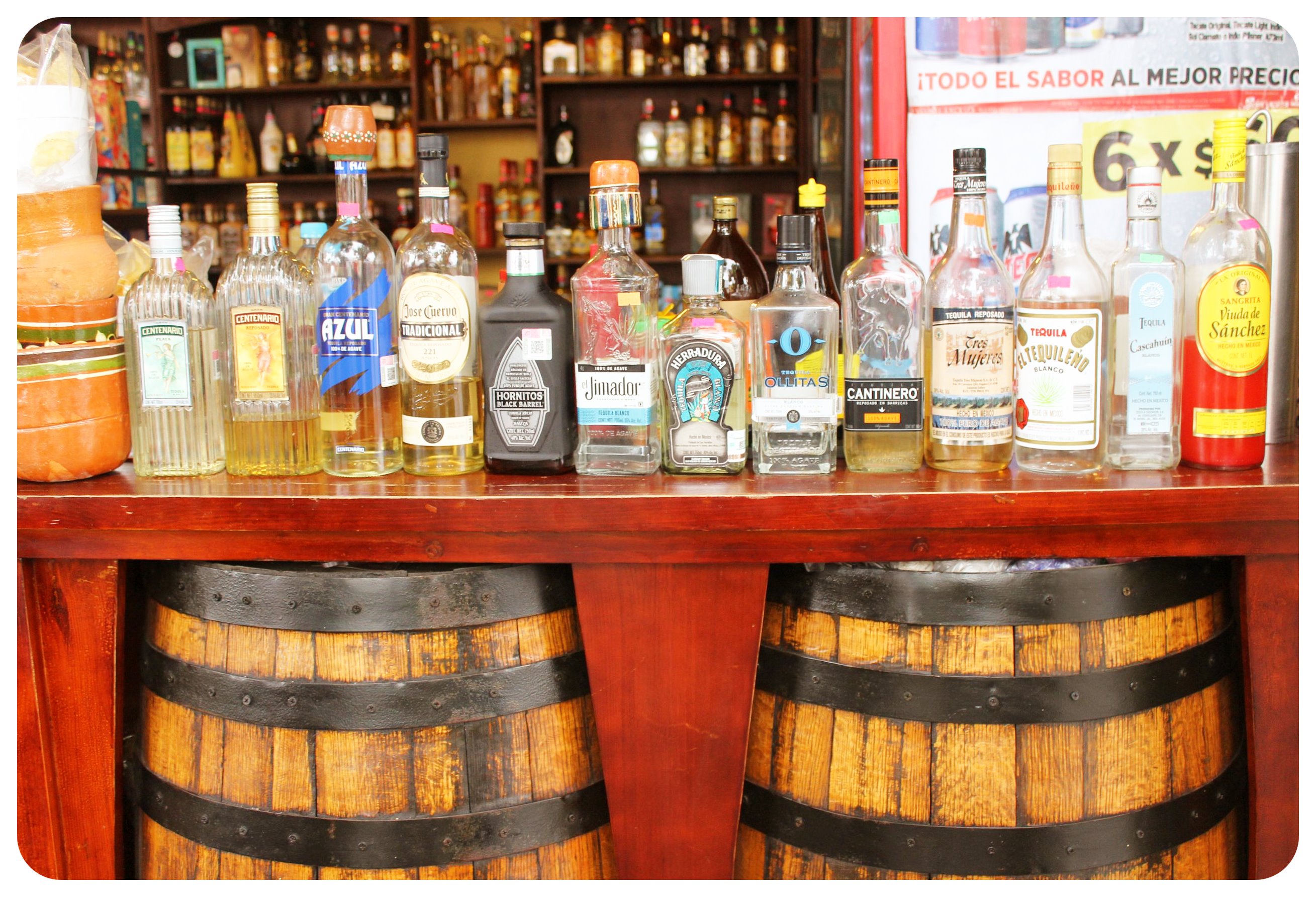 A few other people from the hostel also wanted to visit Tequila, and so we decided to head there together on what turned out to be a pretty rainy Saturday. Saturday is the only day that the Tequila Express runs, a train that goes from Guadalajara to Tequila, solely for tourists, complete with mariachi bands, tequila and some snacks. However, once we saw the hefty price tag (MXN$1,200 US$59), read some lukewarm reviews and found out that we wouldn’t even get to see the town itself, only a distillery, we opted for the more economical way to get there: taking the bus.
A few other people from the hostel also wanted to visit Tequila, and so we decided to head there together on what turned out to be a pretty rainy Saturday. Saturday is the only day that the Tequila Express runs, a train that goes from Guadalajara to Tequila, solely for tourists, complete with mariachi bands, tequila and some snacks. However, once we saw the hefty price tag (MXN$1,200 US$59), read some lukewarm reviews and found out that we wouldn’t even get to see the town itself, only a distillery, we opted for the more economical way to get there: taking the bus.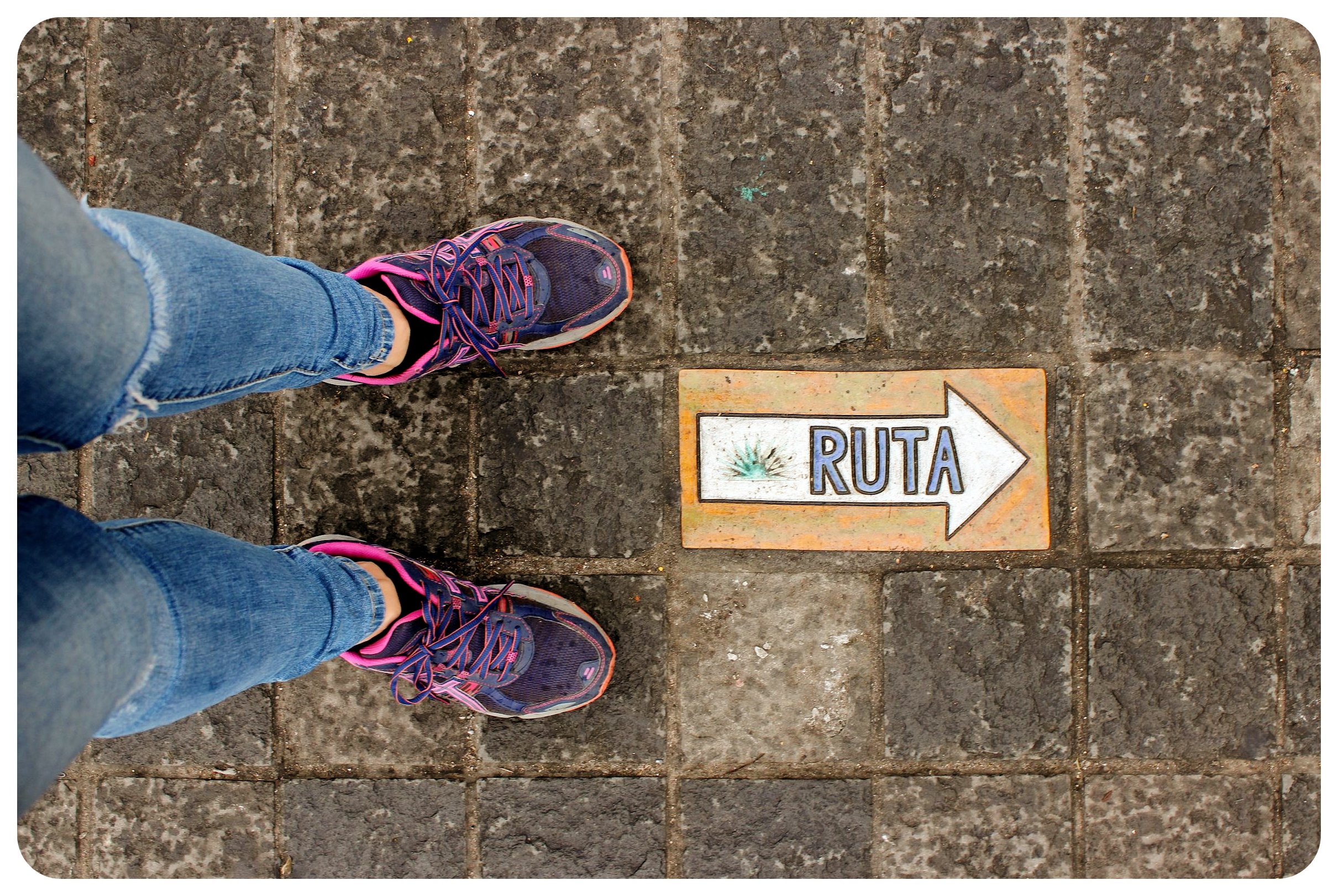 What was supposed to be a 90-minute trip turned into a two hour journey, and when we finally reached Tequila, we were starving. We decided to get some food before finding out how to hop on a distillery tour, of which there are many in the little town, including well-known tequila producers such as Sauza, Tequila Herradura, Jose Cuervo, Cofradia and the El Llano Distillery.
What was supposed to be a 90-minute trip turned into a two hour journey, and when we finally reached Tequila, we were starving. We decided to get some food before finding out how to hop on a distillery tour, of which there are many in the little town, including well-known tequila producers such as Sauza, Tequila Herradura, Jose Cuervo, Cofradia and the El Llano Distillery.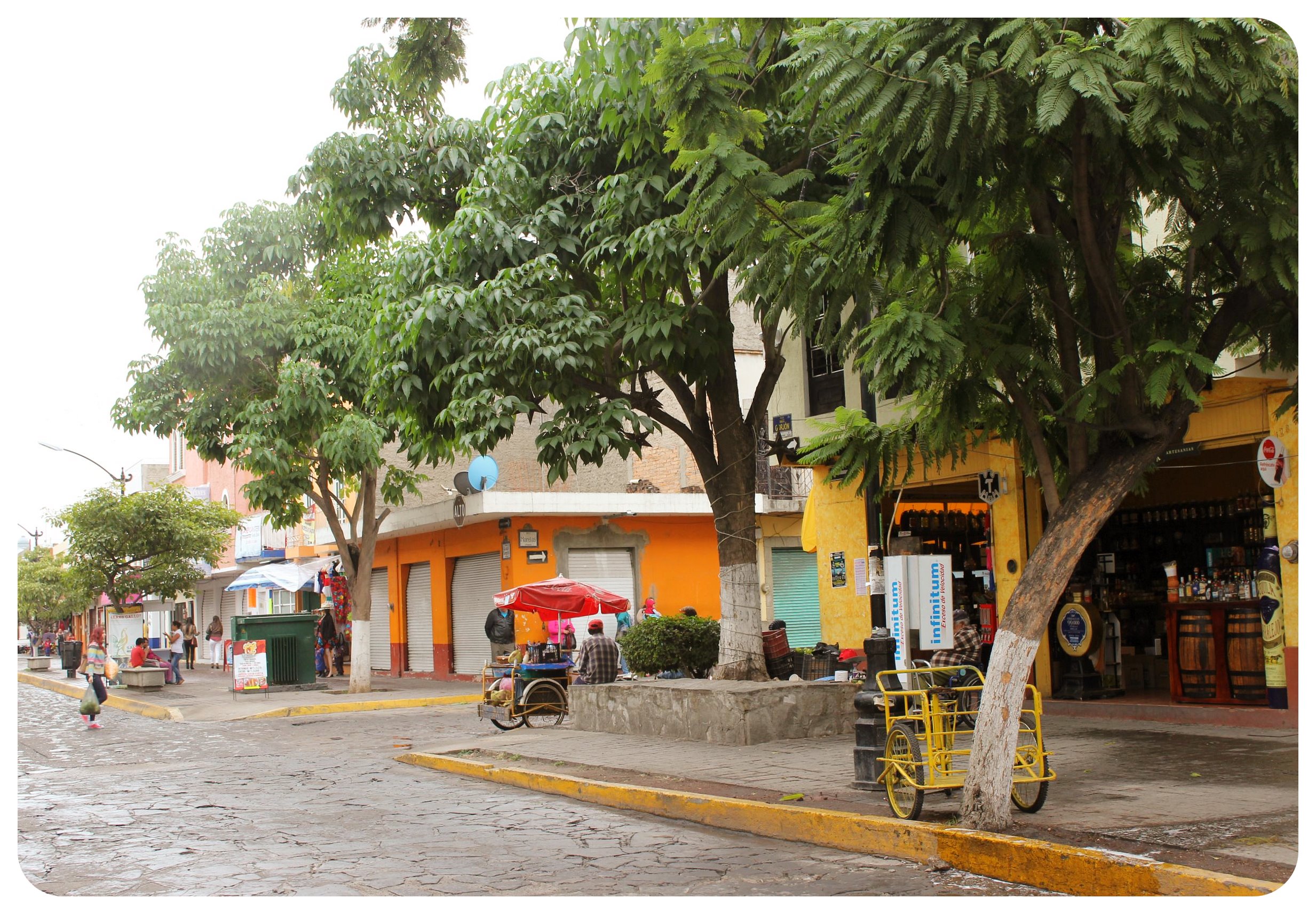 Several touts approached us, trying to sell us their tour, and we finally agreed to join one that left an hour later, which cost MXN$180 (just under US$9), leaving us enough time to grab lunch, and maybe see a little bit more of Tequila.
Several touts approached us, trying to sell us their tour, and we finally agreed to join one that left an hour later, which cost MXN$180 (just under US$9), leaving us enough time to grab lunch, and maybe see a little bit more of Tequila. Strolling through the streets of the village made me wish I would’ve come for an overnight stay. Tourists were roaming the streets now, which were lined with souvenir shops and restaurants. Tequila itself is beautiful, but I think I would’ve enjoyed the village more after the crowds had left and the tequila barrel-shaped vehicles that brought visitors to the distilleries had also left for the day, enjoying a quiet evening on one of the benches in the town square.
Strolling through the streets of the village made me wish I would’ve come for an overnight stay. Tourists were roaming the streets now, which were lined with souvenir shops and restaurants. Tequila itself is beautiful, but I think I would’ve enjoyed the village more after the crowds had left and the tequila barrel-shaped vehicles that brought visitors to the distilleries had also left for the day, enjoying a quiet evening on one of the benches in the town square.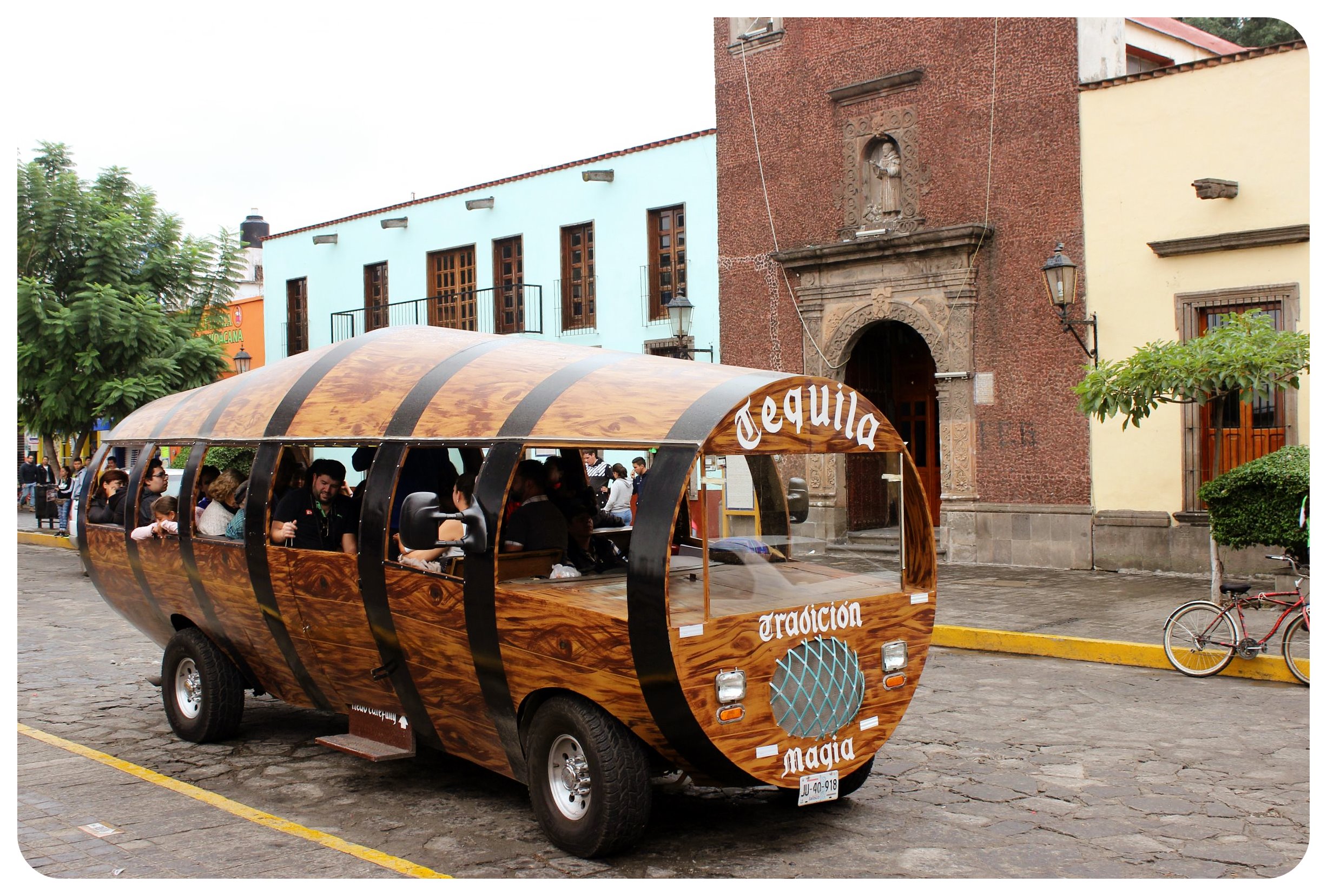 With its colorful Mexican houses, an 18th century stone church and leafy plazas it deserved being included in the list of Mexico’s Pueblos Magicos, towns around the country that offer visitors a ‘magical’ experience because of their natural beauty, cultural riches, or historical relevance.
With its colorful Mexican houses, an 18th century stone church and leafy plazas it deserved being included in the list of Mexico’s Pueblos Magicos, towns around the country that offer visitors a ‘magical’ experience because of their natural beauty, cultural riches, or historical relevance.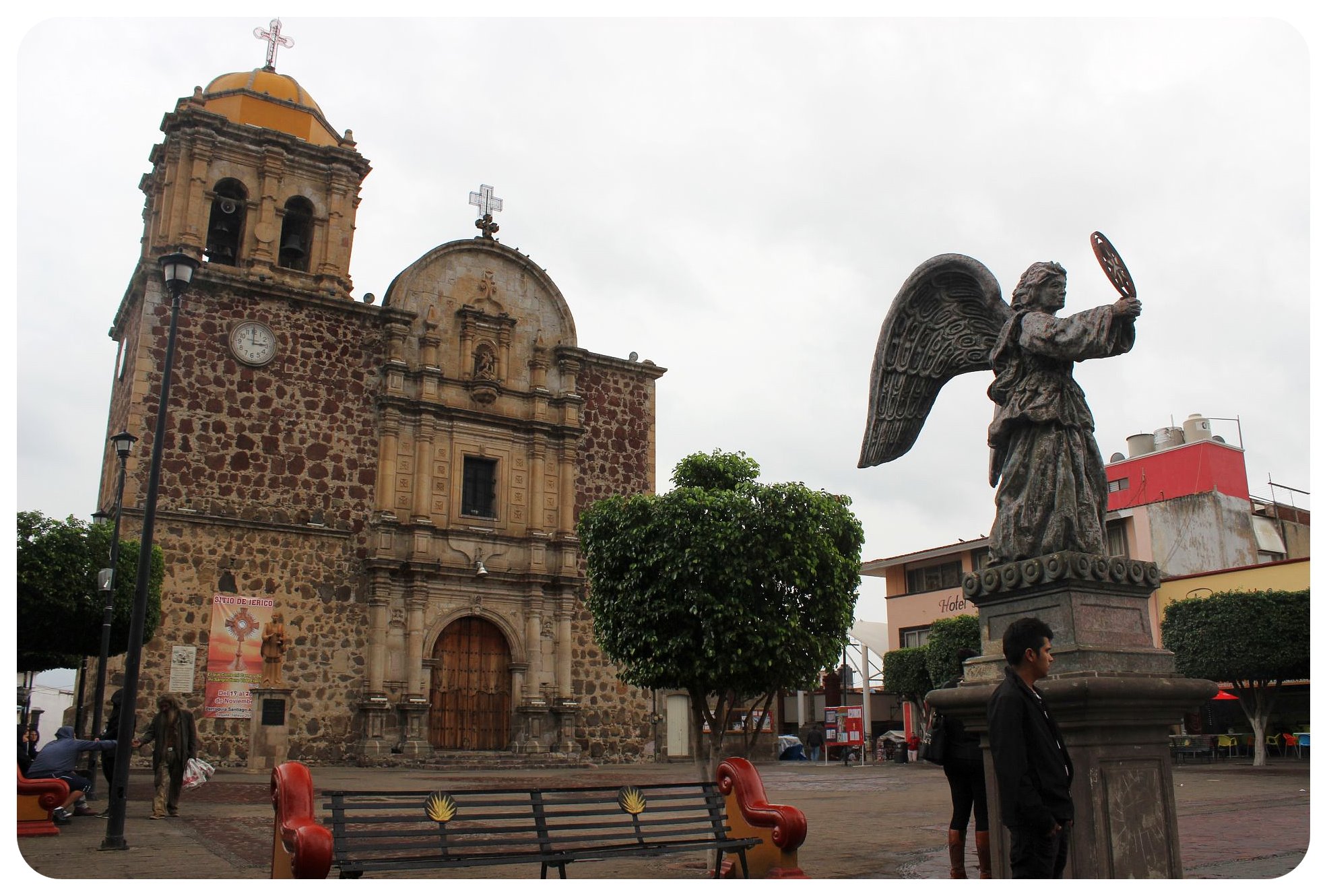 Thanks to Tequila’s significance in producing Mexico’s most famous export, Tequila and the surrounding area have also been given UNESCO World Heritage Site status. For most people, a day trip is probably enough, but I would’ve also added an extra day to check out another distillery, because there are so many in and around Tequila, which is why the region also likes to promote itself as the ‘Tequila Trail’ – think Mexico’s answer to Kentucky’s Bourbon Trail.
Thanks to Tequila’s significance in producing Mexico’s most famous export, Tequila and the surrounding area have also been given UNESCO World Heritage Site status. For most people, a day trip is probably enough, but I would’ve also added an extra day to check out another distillery, because there are so many in and around Tequila, which is why the region also likes to promote itself as the ‘Tequila Trail’ – think Mexico’s answer to Kentucky’s Bourbon Trail.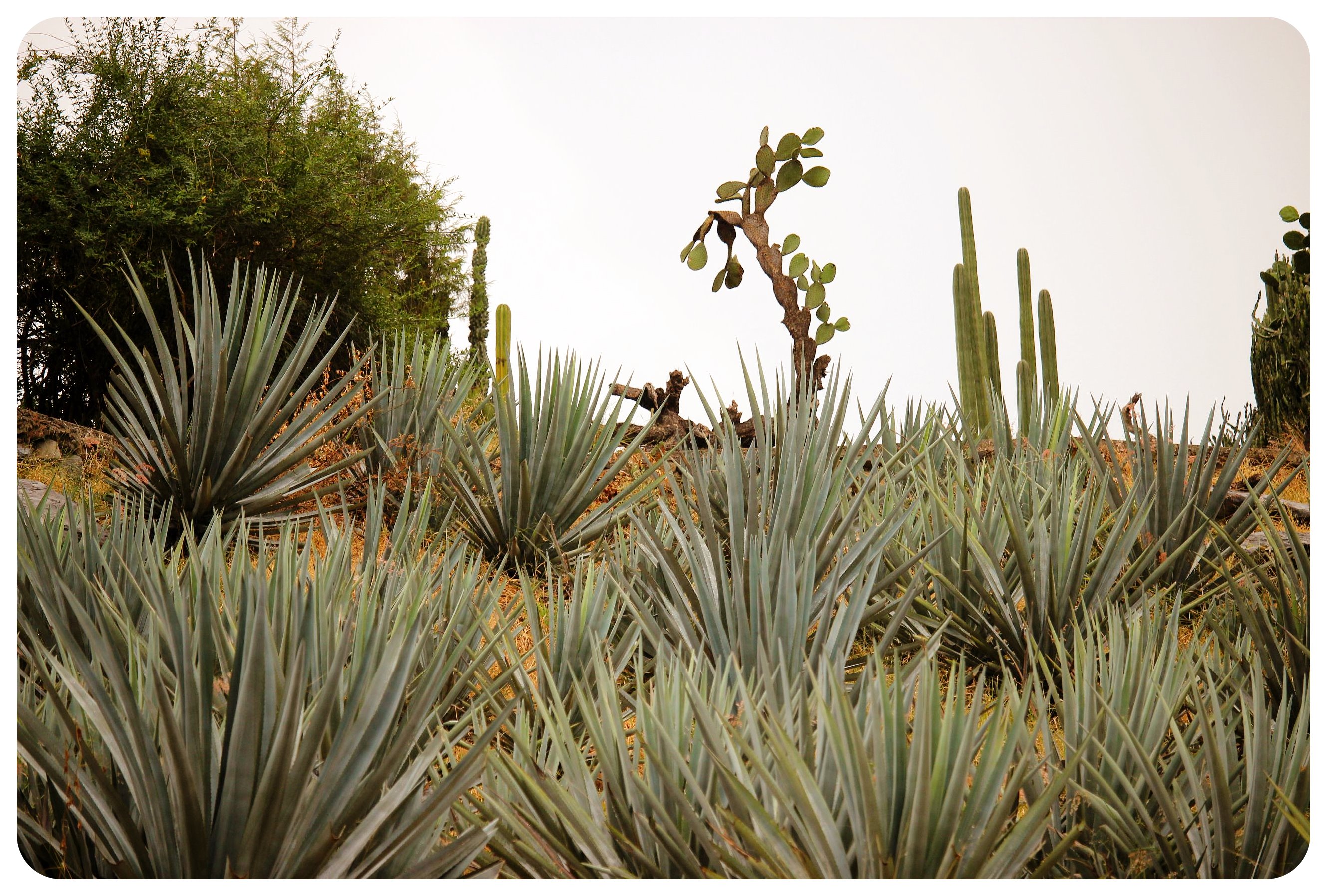 On this visit though, there was only time for one. The tour we’d been sold was for the Orendain Distillery, a family-run, award-winning tequila producer which was founded by Don Edwardo Orendain Gonzalez in 1926. It was fascinating to learn more about the production of tequila, a drink I knew literally nothing about, other than that it is produced from the agave plant. But which part of it?
On this visit though, there was only time for one. The tour we’d been sold was for the Orendain Distillery, a family-run, award-winning tequila producer which was founded by Don Edwardo Orendain Gonzalez in 1926. It was fascinating to learn more about the production of tequila, a drink I knew literally nothing about, other than that it is produced from the agave plant. But which part of it? During the tour, we learned that tequila is made from the piña, the heart of the agave, which, once the spikey leaves have been removed, indeed looks like an oversized piña (Spanish for pineapple). It takes 8 to 10 years until the agave can be harvested though – the tequila business sure is a long-term investment. The companies who were smart enough to extend their Blue Agave fields a decade , however, are now the ones that benefit from the growing popularity of high-end tequilas inside and outside of Mexico.
During the tour, we learned that tequila is made from the piña, the heart of the agave, which, once the spikey leaves have been removed, indeed looks like an oversized piña (Spanish for pineapple). It takes 8 to 10 years until the agave can be harvested though – the tequila business sure is a long-term investment. The companies who were smart enough to extend their Blue Agave fields a decade , however, are now the ones that benefit from the growing popularity of high-end tequilas inside and outside of Mexico.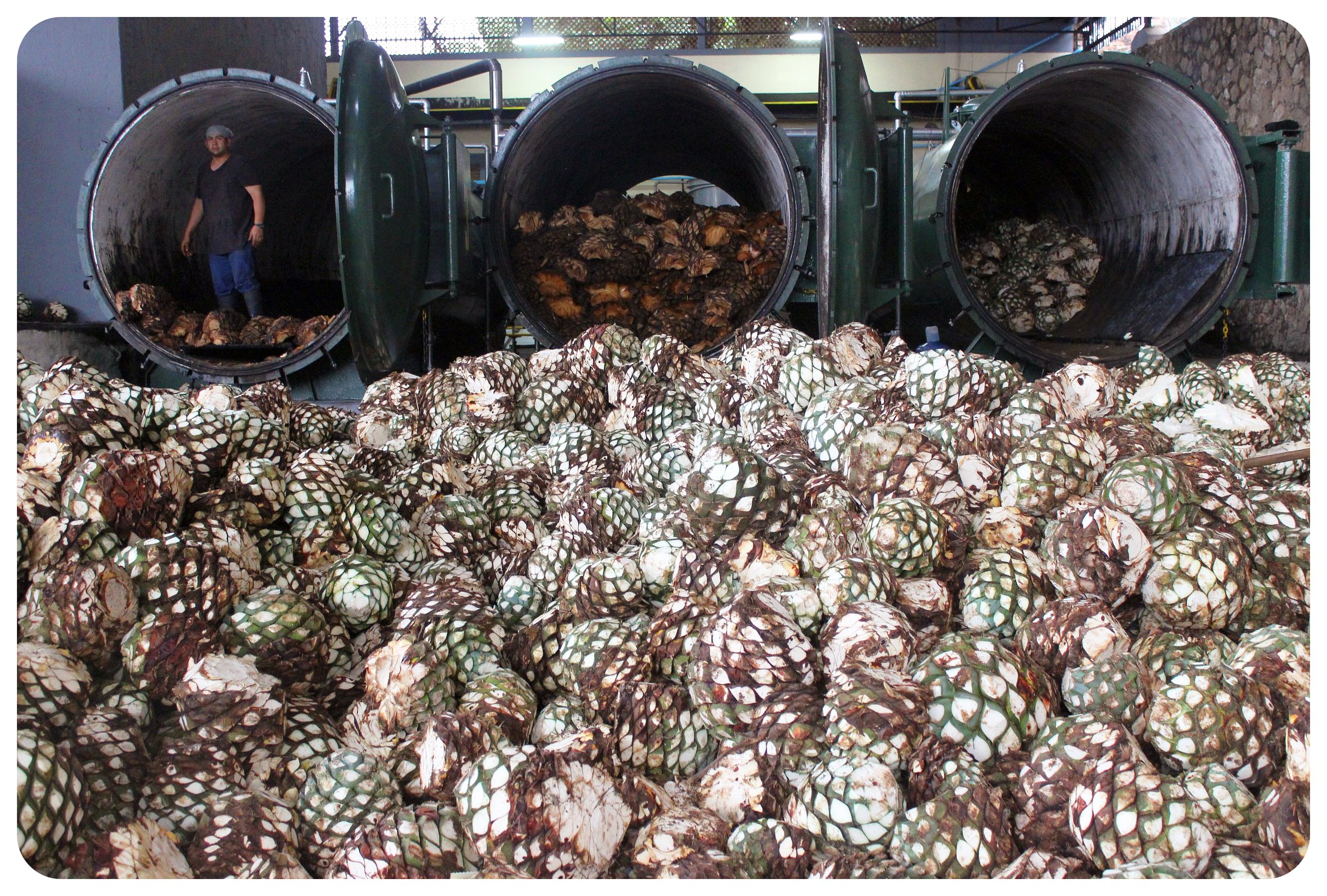 Distilleries here proudly serve ‘100% agave’ tequila – this is what you should look out for, if you, like me, have bad memories of tequila-related headaches, because the 100% pure tequilas don’t cause hangovers, if enjoyed in moderation.
Distilleries here proudly serve ‘100% agave’ tequila – this is what you should look out for, if you, like me, have bad memories of tequila-related headaches, because the 100% pure tequilas don’t cause hangovers, if enjoyed in moderation. The tour of the distillery was highly informative and shows visitors pretty much the entire process of tequila making: first, the piñas are roasted in an oven, then, the sugar is extracted and fermented for 7 to 12 days, and lastly, the tequila is distilled (usually twice), which means ferments are separated by heat and steam pressure.
The tour of the distillery was highly informative and shows visitors pretty much the entire process of tequila making: first, the piñas are roasted in an oven, then, the sugar is extracted and fermented for 7 to 12 days, and lastly, the tequila is distilled (usually twice), which means ferments are separated by heat and steam pressure. There are three different types of tequila: Blanco (bottled immediately upon distillation), Reposado (aged for at least two months), Añejo (aged for at least a year, but less than three) and sometimes there is a fourth one, Extra Añejo (over-aged). We get to try the main three types during our tasting and are surprised how different the tequila tastes from the mediocre stuff we’ve previously tried. Especially the Añejo, which is smooth and tastes more complex.
There are three different types of tequila: Blanco (bottled immediately upon distillation), Reposado (aged for at least two months), Añejo (aged for at least a year, but less than three) and sometimes there is a fourth one, Extra Añejo (over-aged). We get to try the main three types during our tasting and are surprised how different the tequila tastes from the mediocre stuff we’ve previously tried. Especially the Añejo, which is smooth and tastes more complex. We are in good spirits as we walk through the pouring rain back to the bus station to catch a bus back to Guadalajara, and we all agree: coming to Tequila was eye-opening in many ways. The three of us agreed that we’d all been converted to Tequila drinkers, each of us carrying a small bottle in our bags, to enjoy back home.
We are in good spirits as we walk through the pouring rain back to the bus station to catch a bus back to Guadalajara, and we all agree: coming to Tequila was eye-opening in many ways. The three of us agreed that we’d all been converted to Tequila drinkers, each of us carrying a small bottle in our bags, to enjoy back home.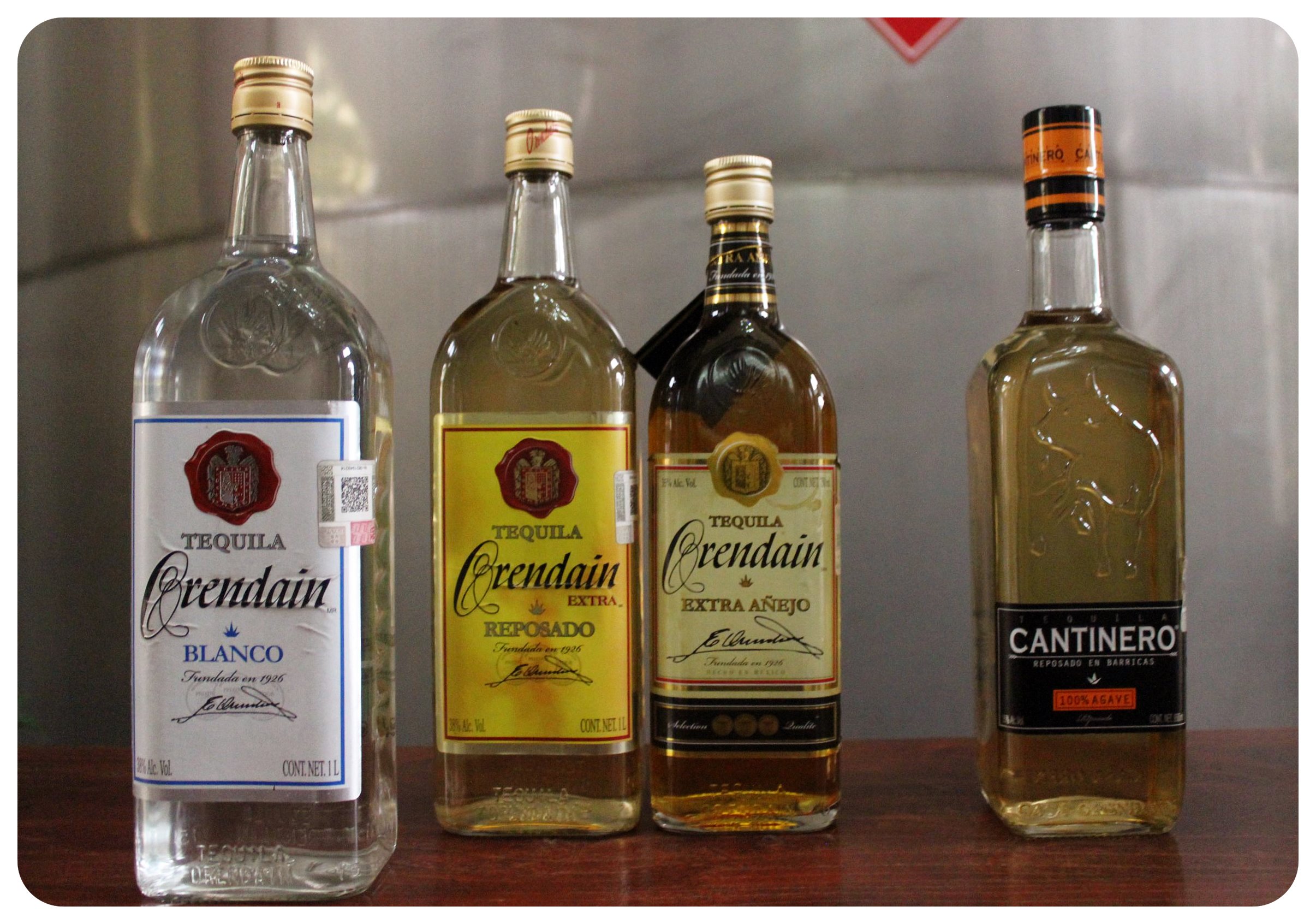
Guadalajara Travel Guide
Where to Stay in Guadalajara
I first stayed at a B&B, which I didn’t love, and decided to move to a hostel with great reviews that I had found on Booking.com. I made the right decision: Hostal De Maria, in a converted old mansion, was in an excellent location in Plaza Colón. It has private rooms as well as dorms, a beautiful colonial-style courtyard, lovely colorful decorations and breakfast is included. Double rooms are US$20, a bed in a 6-bed dorm is US$9.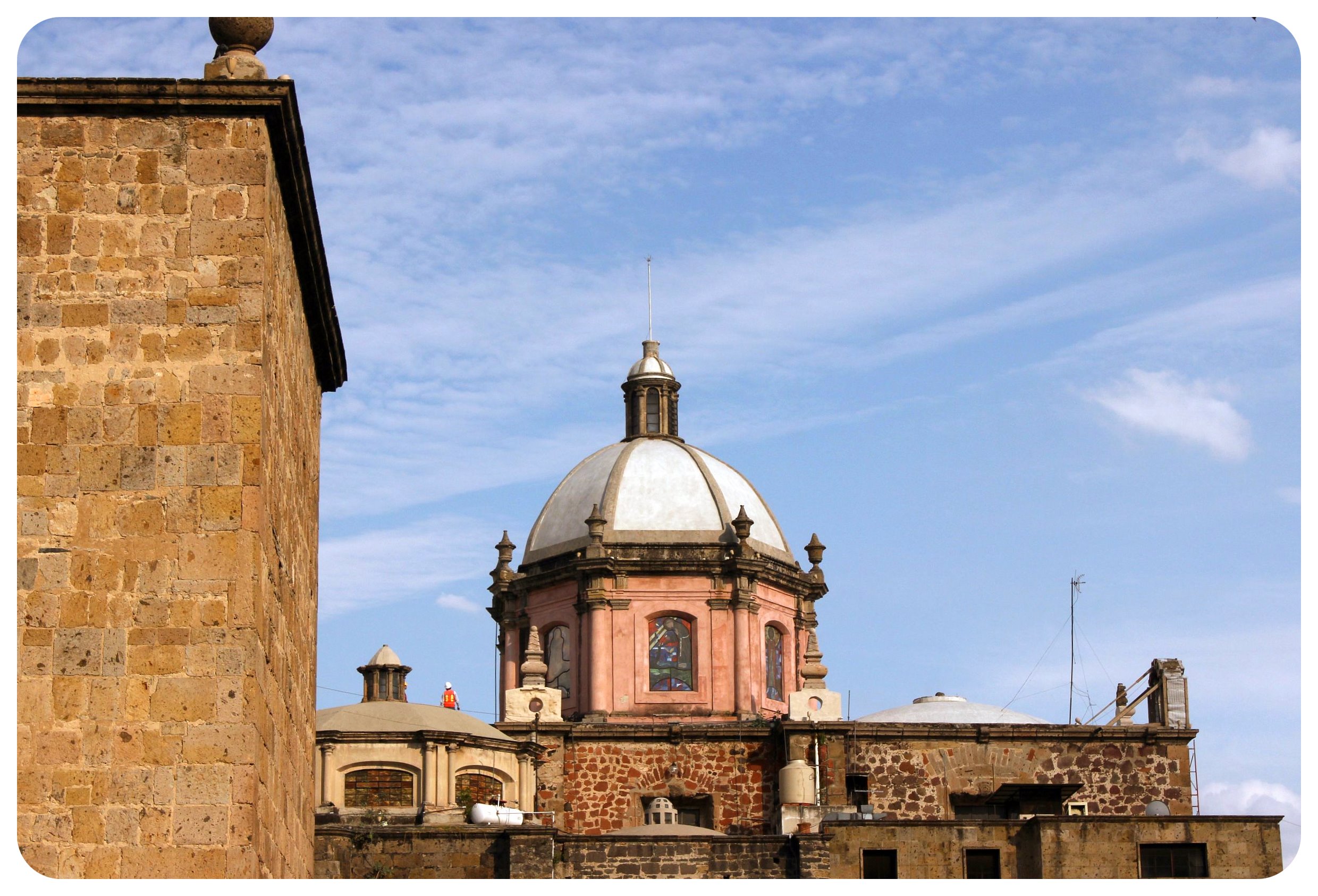
Where to Eat in Guadalajara
- El Sazon de la Comadre – Large selection of Mexican breakfasts
- Finca Riveroll – Fabulous little specialty coffee shop (serves sandwiches, pastries and breakfast)
- La Lupita Cantina – Great Mexican food, and in the evening it turns more into a bar.
- Chai – A coffee shop chain that serves also Western food (mainly sandwiches). Big variety of delicious chai creations.
- Alta Fibra – Best value-for-money for a vegetarian lunch – Three courses including a drink for MXN$55 (US$2.69)
- El Gato Café – Small cozy café near the MUSA which also serves tasty cakes and other food.
- La Bottega – If you love coffee, you have to stop at La Bottega, where I had the best coffee in Guadalajara. A small independent coffee shop that uses Mexican coffee beans.
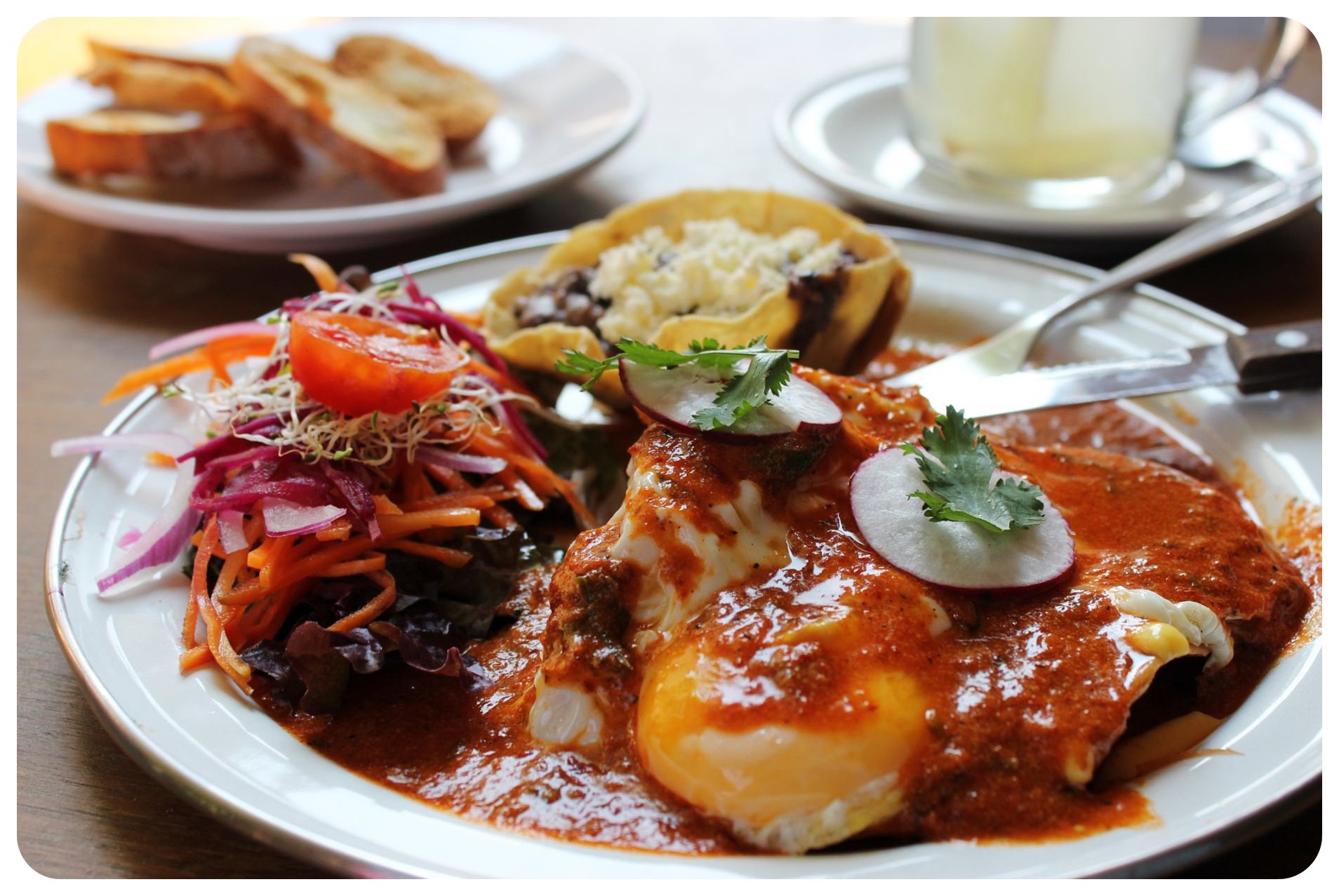
Where to Drink in Guadalajara
The Guadalajara Pub Crawl, which combines a narrated tour of the city with samples of the most popular drinks of the region and an introduction to some cool bars is something I would check out next time I’m in town. Since this tour only runs on Fridays and I had already made plans for that night, I couldn’t take this tour during this trip.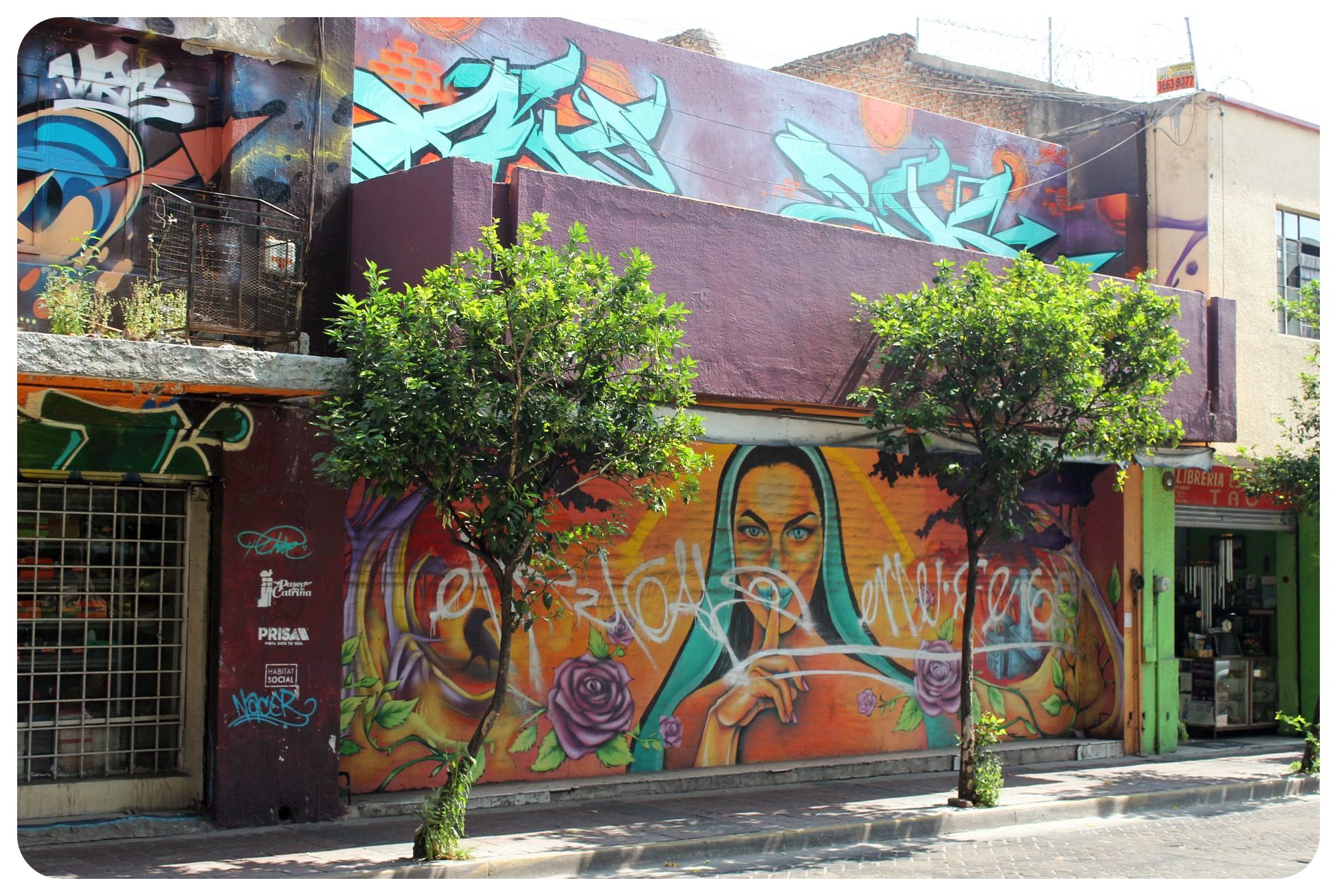
PIN IT!


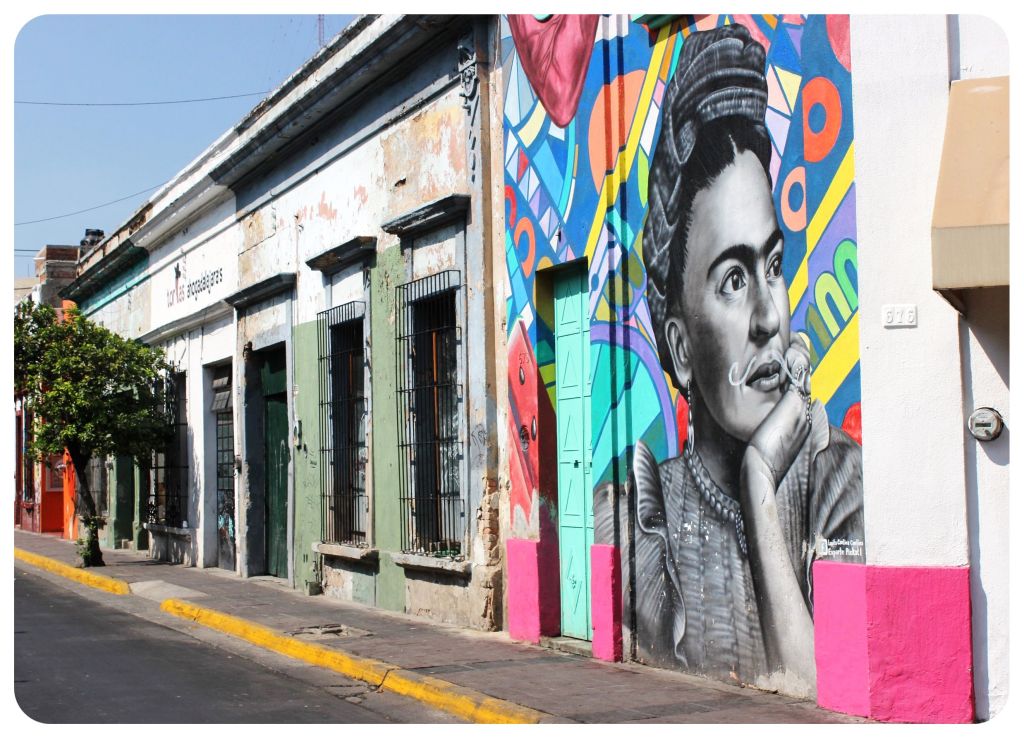

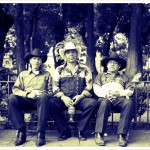
Celina
Friday 16th of February 2018
You have totally described how my trip in November 2017 was and I had a fabulous time by myself. Wish I would of met up with you and we could of done exactly the same adventures. The church’s in Guadalajara, to me, are like museums. Reading your article gave me great ideas for my next trip. I did miss Tlaquepaque...though that will be my next adventure to explore. For this year in March, I will have two days to explore Guanajuato and one day Guadalajara. I may have to take advantage and go to Tlaquepaque next. Thank you for sharing because I felt like I was reliving my trip again.
Beach hopping along Mexico's Riviera Nayarit | GlobetrotterGirls
Friday 17th of November 2017
[…] ahead of me and was surrounded by lush green jungle.Earlier that morning, I had boarded the bus in Guadalajara in a rainstorm, ready to get out of the city after a couple of wet and grey days. I would have […]
The Real Mexico in Guadalajara - Globetrotter Girls - Purple Roofs Gay Travel Blog | Purple Roofs Gay Travel Blog
Thursday 9th of March 2017
[…] By Dani – Full Story at the Globetrotter Girls […]
Andreas Moser
Sunday 26th of February 2017
The public library of Guadalajara is a beautiful place, too. In a colonial palace and with a very good selection of books, of course.